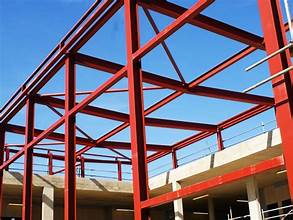Span: The distance between two supports.
- Supports: The structures that hold up the span.
- Loads: The forces that act on the span, such as the weight of the structure itself, the weight of people and vehicles, and wind loads.
Types of Span Structures
There are three main types of span structures:
- Beam bridges: These are the most common type of span structure. They consist of a horizontal beam that is supported at both ends.
- Arch bridges: These are bridges that are shaped like an arch. The arch is supported at its base, and the weight of the bridge is transferred to the supports through compression.
- Suspension bridges: These are bridges that are suspended from cables that are anchored to towers. The cables are supported by the weight of the bridge and the weight of the vehicles that cross it.
How Span Structures Work
Span structures work by transferring the loads that act on them to the supports. The way that the loads are transferred depends on the type of span structure.
- Beam bridges: The loads on a beam bridge are transferred to the supports through bending. The beam bends under the weight of the loads, and the supports resist the bending.
- Arch bridges: The loads on an arch bridge are transferred to the supports through compression. The arch pushes down on the supports, and the supports resist the compression.
- Suspension bridges: The loads on a suspension bridge are transferred to the supports through tension. The cables are pulled tight by the weight of the bridge and the vehicles that cross it, and the supports resist the tension.
Factors to Consider When Designing a Span Structure
There are a number of factors that must be considered when designing a span structure, including:
- The span: The longer the span, the more difficult it is to design a structure that can support the loads.
- The loads: The loads that the structure will be subjected to, such as the weight of the structure itself, the weight of people and vehicles, and wind loads.
- The materials: The materials that the structure will be made of, such as steel, concrete, or wood.
- The environment: The environment that the structure will be exposed to, such as wind, rain, and snow.
Conclusion
Span structures are an important part of our infrastructure. They allow us to build bridges, stadiums, and other large-scale structures that would be impossible to build without them. By understanding the basic principles of span structures, we can better appreciate the engineering feats that have made these structures possible.



